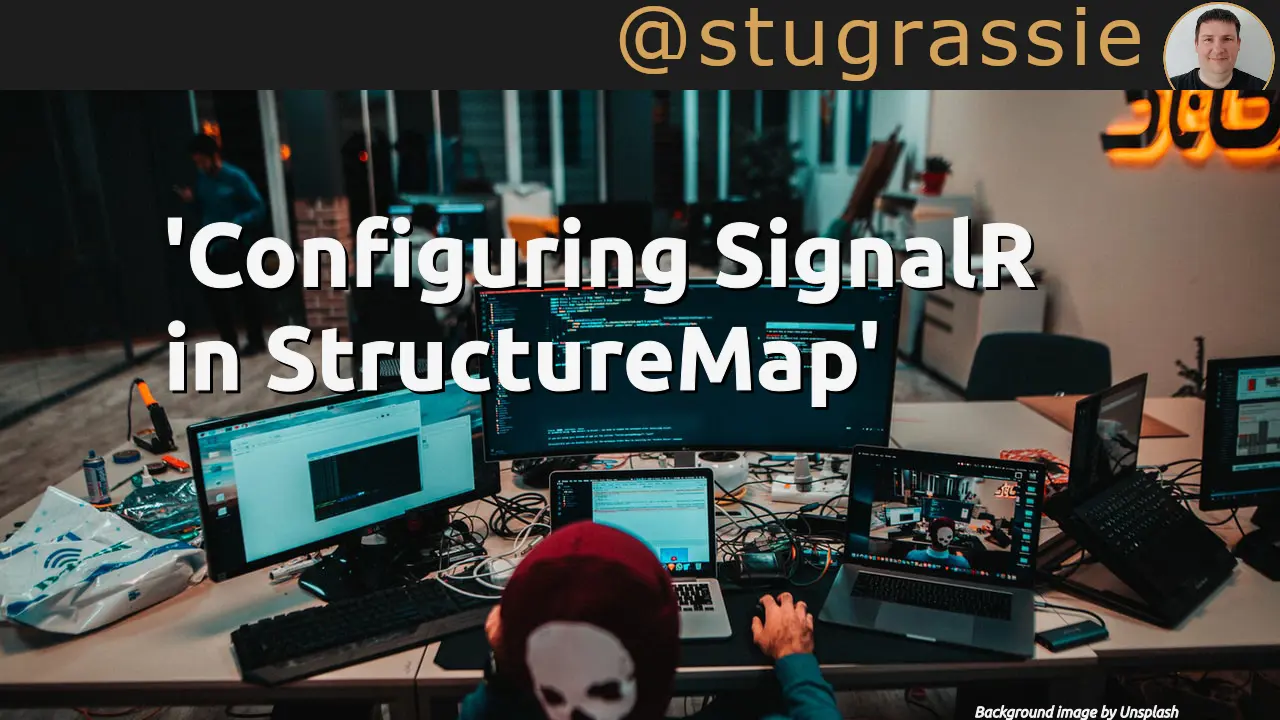Configuring SignalR in ASP.NET MVC, using StructureMap as the IoC container is fairly straightforward, but not without some subtleties that caught me out.
For the purposes of this post, I’m going to assume that you are familiar with both SignalR and StructureMap, and that you know how to configure them in an ASP.NET MVC application. I will also assume that through some google-fu you have seen the Dependency Injection in SignalR guidance, and have worked through it and got to the “Using IoC Containers in SignalR” section.
I would assume, although I’ve not tested it, that much of this could also be applied to a self-hosted SignalR server.
Library versions used
This post is based on:
- Asp.Net MVC 5.2.3
- SignalR 2.2.0
- StructureMap 3.1.5.154
- StructureMap.MVC5 3.1.1.134
Follow the guidance up to the section on using Ninject, at which point we now want to configure StructureMap.
Replace the SignalR Dependency Resolver
The implementation is nearly identical, with some obvious StructureMap specific differences:
public class StructureMapSignalRDependencyResolver : DefaultDependencyResolver
{
private readonly IContainer _container;
public StructureMapSignalRDependencyResolver(IContainer container)
{
_container = container;
}
public override object GetService(Type serviceType)
{
return _container.TryGetInstance(serviceType) ?? base.GetService(serviceType);
}
public override IEnumerable<object> GetServices(Type serviceType)
{
var objects = _container.GetAllInstances(serviceType).Cast<object>();
return objects.Concat(base.GetServices(serviceType));
}
}The behaviour is fairly similar. TryGetInstance will attempt to resolve the type, and if it doesn’t know about it, will return null, in which case we call the base resolver, which does.
Register this with StructureMap:
For<IDependencyResolver>().Singleton().Use<StructureMapSignalRDependencyResolver>();In your Startup, where you configure SignalR, we need to use this new resolver implementation:
var resolver = DependencyResolver.Current.GetService<Microsoft.AspNet.SignalR.IDependencyResolver>();
var hubConfiguration = new HubConfiguration
{
Resolver = resolver
/* other options as required */
};Here, we are using the MVC DependencyResolver, which has already been replaced by StructureMap thanks to StructureMap.MVC5, to resolve an instance of the SignalR dependency resolver we’ve registered, which we then tell SignalR to use with a hub configuration object.
Now we just need to configure the StructureMap registry, and teach it how to resolve IHubConnectionContext<dynamic>:
For<IConnectionManager>().Use<ConnectionManager>();
For<IStockTicker>()
.Singleton()
.Use<StockTicker>()
.Ctor<IHubConnectionContext<dynamic>>()
.Is(ctx => ctx.GetInstance<IDependencyResolver>()
.Resolve<IConnectionManager>()
.GetHubContext<StockTickerHub>().Clients);As in the guidance, we want the StockTicker instance to be a singleton, and we have specify how to resolve the IHubConnectionContext<dynamic> which the StockTicker requires. In the Is, I’m using the context to resolve the default SignalR connection manager we’ve registered. This isn’t in the guidance, but I couldn’t get it work without doing this.
If anyone has comments/improvements on this, I’d love to hear them.

